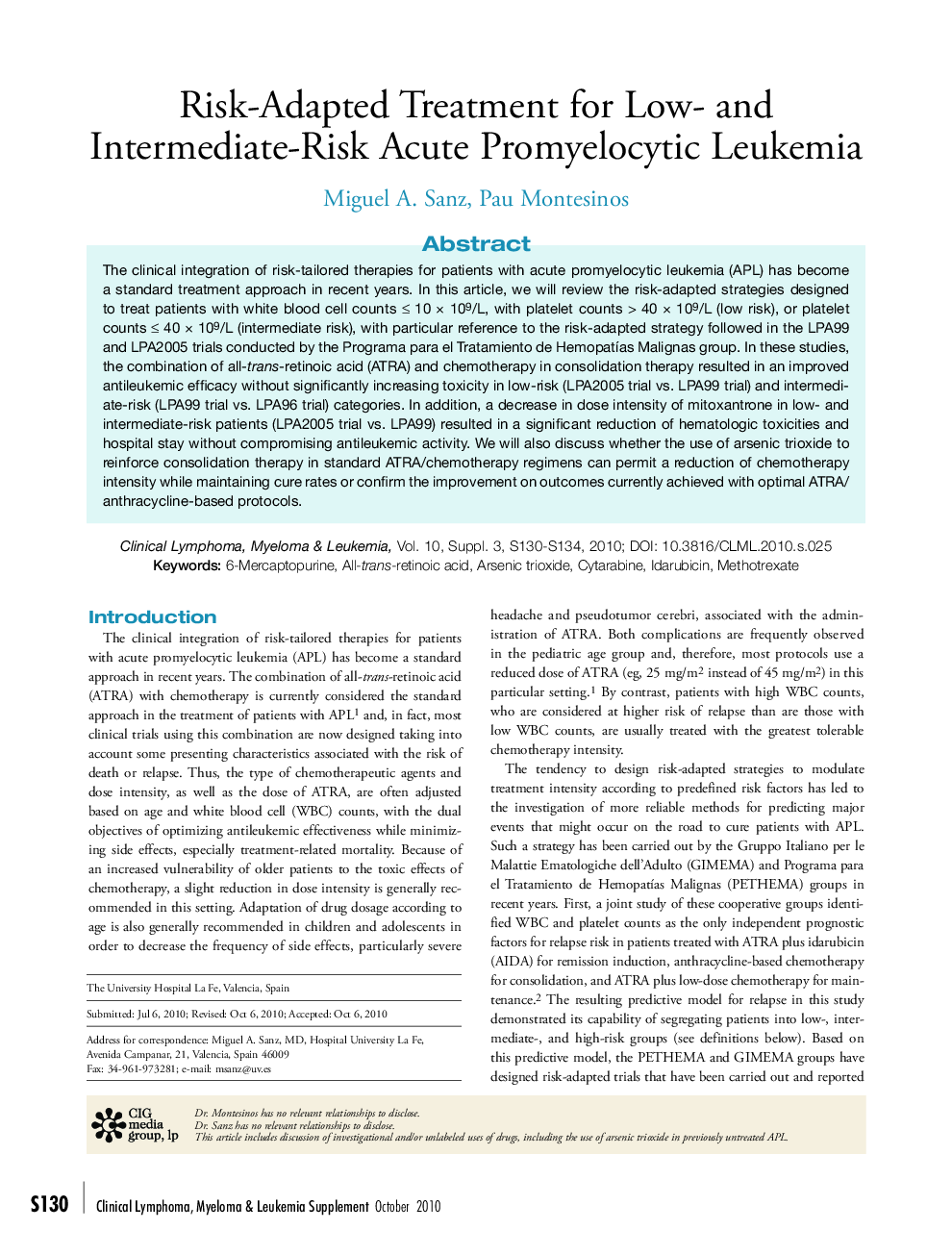| Article ID | Journal | Published Year | Pages | File Type |
|---|---|---|---|---|
| 2755533 | Clinical Lymphoma Myeloma and Leukemia | 2010 | 5 Pages |
The clinical integration of risk-tailored therapies for patients with acute promyelocytic leukemia (APL) has become a standard treatment approach in recent years. In this article, we will review the risk-adapted strategies designed to treat patients with white blood cell counts ≤ 10 × 109/L, with platelet counts > 40 × 109/L (low risk), or platelet counts ≤ 40 × 109/L (intermediate risk), with particular reference to the risk-adapted strategy followed in the LPA99 and LPA2005 trials conducted by the Programa para el Tratamiento de Hemopatías Malignas group. In these studies, the combination of all-trans-retinoic acid (ATRA) and chemotherapy in consolidation therapy resulted in an improved antileukemic efficacy without significantly increasing toxicity in low-risk (LPA2005 trial vs. LPA99 trial) and intermediate-risk (LPA99 trial vs. LPA96 trial) categories. In addition, a decrease in dose intensity of mitoxantrone in low- and intermediate-risk patients (LPA2005 trial vs. LPA99) resulted in a significant reduction of hematologic toxicities and hospital stay without compromising antileukemic activity. We will also discuss whether the use of arsenic trioxide to reinforce consolidation therapy in standard ATRA/chemotherapy regimens can permit a reduction of chemotherapy intensity while maintaining cure rates or confirm the improvement on outcomes currently achieved with optimal ATRA/anthracycline-based protocols.
